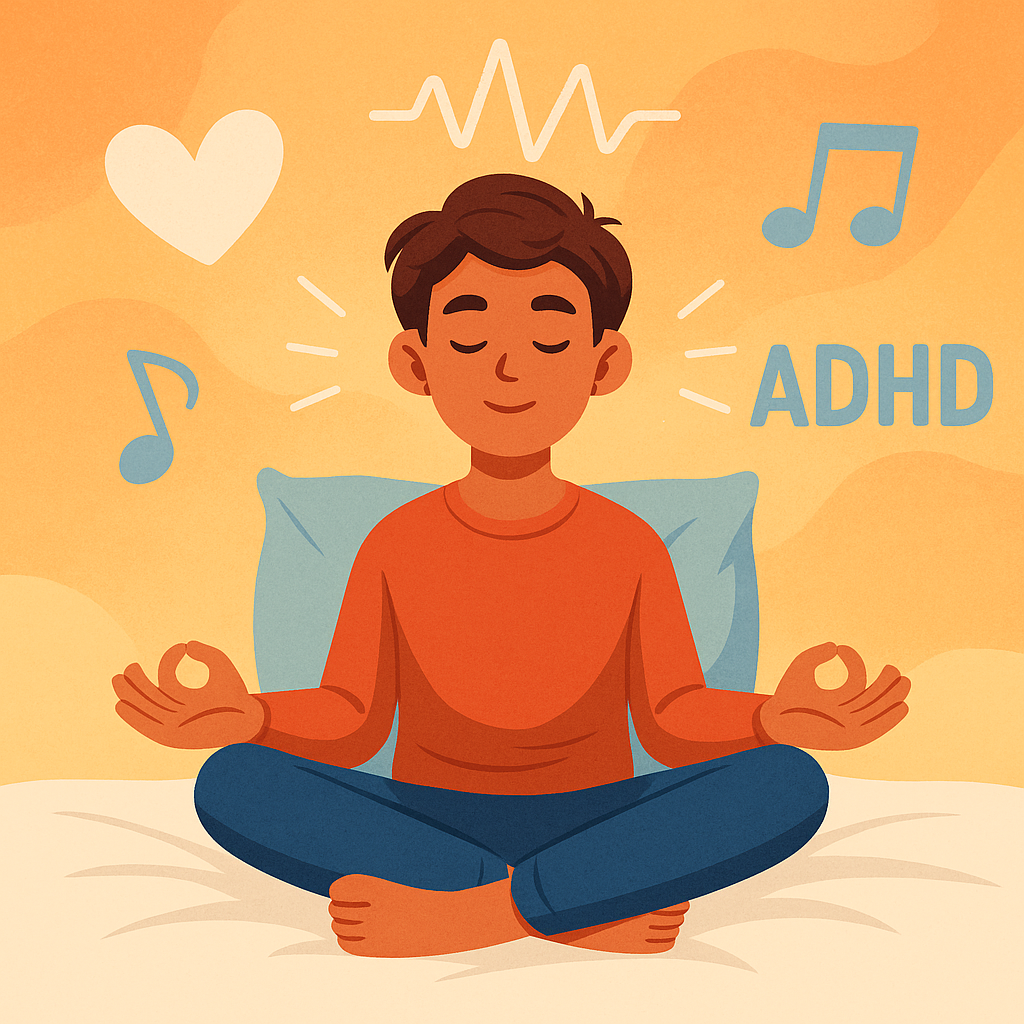Introduction: Why ADHD Meditation Works
If you’ve ever felt like your brain is a browser with 30 tabs open, you’re not alone. ADHD meditation offers a simple, science-backed way to slow things down—even when your mind is constantly racing. You don’t need to sit still for an hour or force silence. Instead, meditation can be short, active, and even fun.
Studies have shown that meditation for ADHD can help reduce impulsivity, enhance attention span, and support emotional control. These benefits come from consistent, ADHD-friendly techniques like guided breathing, movement, and mindfulness.
This article walks you through 8 highly practical ADHD meditation strategies designed for all ages—kids, teens, and adults. No pressure. Just progress.
1. What Is ADHD Meditation and Why Does It Work?
ADHD meditation is a flexible practice that trains the brain to pause, focus, and reset. Unlike traditional meditation that emphasizes long silence, this approach embraces short attention spans and high energy.
Even just a few minutes a day can:
- Calm mental chaos
- Support emotional balance
- Improve executive function
It’s one of the most effective ADHD calming strategies because it fits the brain—not fights it.
2. Start with 1-Minute Guided Breathing Sessions
A great way to ease into meditation is through structured breathing—just like many spiritual traditions around the world recommend. For example, Islamic prayer (Salah) uses breath and repetition to create a rhythm that calms the nervous system. You can adapt similar breathing styles into your own daily practice, regardless of faith.
Short meditations for ADHD are more effective than long, forced ones. Begin with just one minute of ADHD breathing exercises:
Try this:
- Sit or stand with your back straight.
- Breathe in for 4 counts, out for 4.
- Focus only on the breath.
Use apps like Insight Timer or YouTube to find guided meditation for ADHD that’s simple and energizing.
3. Use Movement-Based Meditation for Restless Energy
Stillness isn’t necessary. In fact, movement is one of the most ADHD-friendly forms of mindfulness.
Try:
- Walking slowly and focusing on your steps
- Stretching while breathing mindfully
- Doing yoga to reset between tasks
These are great forms of mindfulness for ADHD that release energy without requiring full stillness.
4. Try Calming Music, Binaural Beats, or Melodic Recitation During Meditation
Some people find deep calm in soft Qur’anic recitations, mantras, or affirmations repeated rhythmically—similar to how others use binaural beats. The steady tone and repetition can naturally calm the mind and focus attention. Whether it’s a peaceful melody, a chant, or a spiritual verse, rhythmic sound works wonders for ADHD.
Not all minds like silence. Soft music or background sounds can increase focus meditation for ADHD by helping the brain settle.
Tips:
- Use playlists labeled “ADHD focus” or “calm beats”
- Try binaural beats for brainwave balancing
- Use noise-cancelling headphones
The rhythm provides just enough stimulation to quiet distractions.
5. Set Realistic Expectations with Short Sessions
You don’t need 20 minutes of meditation to feel results. Most people benefit from short meditations for ADHD that fit their attention capacity.
Pro Tips:
- Set a 2–5 minute timer
- Focus on breathing, sound, or a single word
- Be kind to yourself when your mind drifts—just start again
Over time, these short wins build lasting focus.
6. Add a Fidget or Object for Tactile Focus
If you need to keep your hands busy, use that to your advantage.
Try holding:
- A smooth worry stone
- A small textured object
- A sensory fidget tool
These are excellent ADHD mindfulness techniques that ground your attention in touch and reduce anxiety.
7. Use ADHD-Friendly Guided Meditations or Scripts
Meditation for ADHD should never be boring. Find or create short, friendly meditations that hold your attention.
Look for:
- Meditations that use storytelling or visualization
- Scripts that include movement cues
- Sessions with music and natural pacing
Parents or teachers can use these for meditation for kids with ADHD, keeping things simple and playful.
8. Build Meditation into Daily Routines (Inspired by Timeless Practices)
Consistency is key—and many faith-based traditions use structured timings to reset the mind. You can mirror this by choosing set points in your day (like after waking up, mid-afternoon, or before bed) to pause and practice mindfulness. Just 1–3 minutes of conscious breathing or stretching during these natural breaks can work like a reboot for your brain.
Make mindfulness automatic by attaching it to your daily habits.
Try these combos:
- 1-minute breath before brushing teeth
- 3 deep breaths before homework
- A short stretch before bed
These consistent practices help build emotional regulation without effort.
Bonus: What to Avoid When Practicing ADHD Meditation
- Don’t expect to clear your mind completely
- Avoid silence if it causes anxiety
- Skip long, rigid meditations that feel overwhelming
Stay adaptive. Meditation is a tool, not a test.
Conclusion: Progress Over Perfection
ADHD meditation isn’t about becoming a monk—it’s about finding your own way to calm and focus.
Whether you’re trying to help a child, manage work stress, or improve focus naturally, these meditation to improve focus strategies can work with your brain—not against it.
Pick one simple practice today—a breath, a stretch, or a sound—and repeat it tomorrow.
With the right tools and a bit of patience, clarity and calm are within reach.
You don’t need to change your brain. You just need to give it the support it deserves.
Read more about: How to Recognize ADHD Symptoms in Teenagers
8 Tips to Add Mindfulness to Your Mealtime
Heart Chakra Meditation Techniques
ADDitudeMag.com – ADHD Mindfulness Techniques

